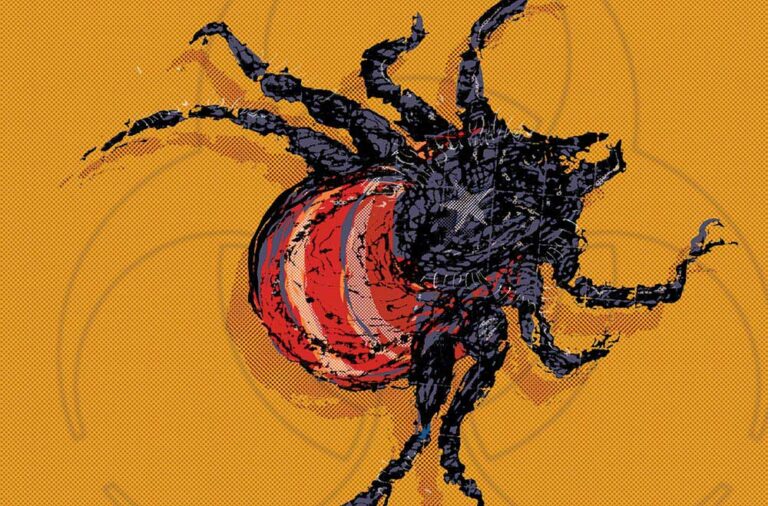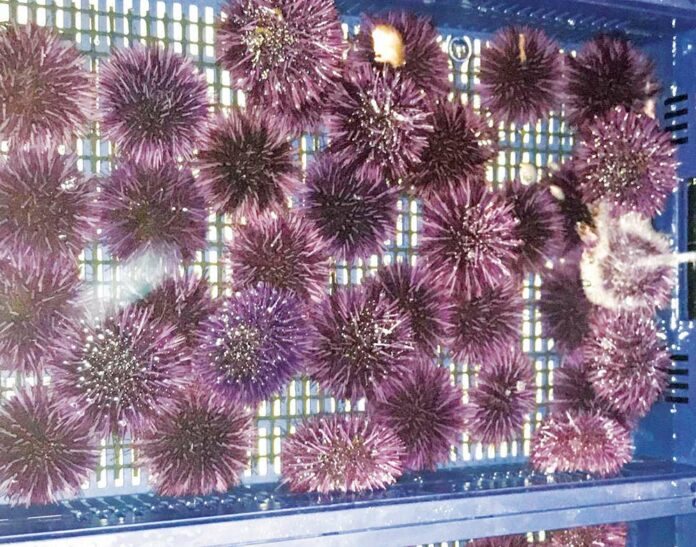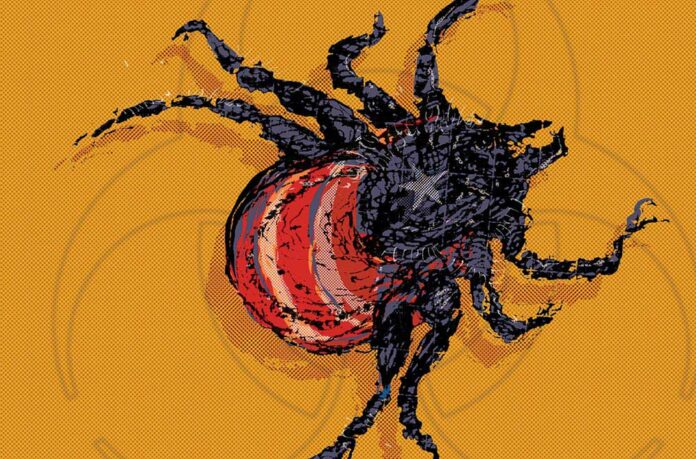Some breathe through scuba gear, while others hold their breath—and each carries a large rock. Until several years ago, these recreational divers preferred to spend a weekend visit to the North Coast diving for abalone—the giant, prized sea snails. This last month, though, they spent hours smashing purple sea urchins.
“We’ve been hearing other divers already saying they’re seeing fewer urchins,” says Josh Russo, the president of the Watermen’s Alliance, a diving advocacy group, and the chief organizer of the urchin smashing outings.
Russo’s group represents just one faction of a broader community of divers, commercial fishermen, biologists and state officials hoping to cull a plague of millions of purple urchins laying waste to the North Coast’s once lush and abundant kelp forests, bringing down an entire ecosystem with the iconic macroalga.
Another, very separate and more complex urchin-culling project is still in its planning stages at the Bodega Marine Laboratory, in Bodega Bay. Here, Laura Rogers-Bennett, an environmental scientist with the California Department of Fish and Wildlife, helps feed and fatten hundreds of purple urchins, captured off nearby rocky reefs, in tanks of seawater. Urchins are valued for their richly flavored golden gonads, or uni. But because these urchins ate their own food supply down to the bare rock, they now persist in a semi-starved state; their gonads have shriveled, turning gray and worthless.
But Rogers-Bennett says it takes less than three months to restore them to health, and culinary value, on a diet of dried seaweed pellets. The project is part of an experimental collaboration with a Norwegian company called Urchinomics, which is pursuing a unique business model of making commercial industries out of overpopulated urchins. Scaling up the experiment into a viable business—which could occur over the next few years—will mean building onshore facilities with large tanks and recirculating seawater systems.
It could also represent a symbolic step forward for sustainable seafood.
“It wouldn’t just be sustainable—it would be restorative, where the more you take, the more you help restore the kelp forests of California,” Rogers-Bennet says.
And California is hardly alone as a victim of escalating urchin numbers. In many regions around the world, changing marine conditions—including ocean warming—encourage the spread of urchins, which overwhelm underwater ecosystems when their numbers exceed the environment’s carrying capacity. This happened in Tasmania, Norway and British Columbia, among other regions, where local urchin species proliferated and destroyed once-magnificent kelp beds and seaweed meadows. In their place are what scientists call urchin barrens—rocky underwater seascapes where little but urchins dwell. Urchinomics is conducting trials in all these regions.
In Northern California, bull kelp grew so thick as recently as five years ago that it posed a real hazard and a logistical consideration for recreational abalone divers. Often, the kelp was so dense that swimming over the surface became a grueling task—like walking through a thicket of blackberries. The nuisance became a danger under the surface, where the numerous kelp stalks running to the seafloor like vines in a jungle created a drowning hazard.
But the kelp today is all but gone, as are the prized sea snails that rely on it. In place of prior ecological diversity are chiefly one thing—purple urchins, tens of millions of them in the shallow waters of the North Coast. The animals proliferated starting about five years ago after a mysterious disease wiped out their main predator, the sunflower sea star. Almost simultaneously, a spell of warm ocean water caused a massive die-off of kelp. Urchins eat kelp, and prevent recovery of the vegetation.
Abalone also eat kelp, and with their food source depleted they have starved and died by the millions. Urchins, though, can live for years without eating solid food. For now, the semi-starved urchins rule the seafloor, eating any sprouts of kelp that appear and thereby keeping the ecosystem locked in its gray and dreary, barren state.
Red sea urchins have also been impacted by the purple urchin scourge. Larger than the purple urchins, reds were until recently the valuable core of a small but thriving commercial market. Now, like the purples, the reds have little to eat, and their prized gonads have withered into unappetizing strips of gray flesh. The North Coast’s commercial urchin diving economy has collapsed.
When—and if—all this will change is not clear. Urchin barrens have lasted for decades in other regions, making the future of California’s coastal marine environment look bleak.
“These urchin barrens are very different from the barrens we’ve seen before in Southern California, where they were patchy and very small and the kelp system would often bounce back the next year,” Rogers-Bennett says. “These barrens are much more extensive and long-lasting.”
In Van Damme cove, a few miles south of Fort Bragg, Russo anchored four buoys to mark a large quadrant inside of which he and other volunteer divers smash urchins by the thousands. Russo’s plan, independent of more formally guided initiatives, is to create a clearing in the urchin barrens where kelp can potentially take root and grow.
“It can’t recover if it can’t even start growing,” he says.
The daily recreational bag limit on purple urchins is 35. However, an addendum made this year to state law bumped up the bag limit in Sonoma, Mendocino and Humboldt counties to 40 gallons per day. Russo estimates this equals 600 to 800 pounds of crushed urchins, with three or four urchins to the pound.
State law prohibits wanton waste of fish and game, but it allows harvested fish or invertebrates to be used for bait.
“We’re baiting with these urchins,” Russo says. “We’re not just smashing them. That would be illegal.” He notes rockfish, surfperch and lingcod swarm around divers as they work.
“The law doesn’t say you have to catch what you bait, so we’re just baiting,” he says.
Smashing urchins underwater has helped restore urchinated kelp forests before. It proved successful in Southern California, for one, where concentrated efforts to kill the animals allowed denuded giant kelp groves to grow back.
But the scale of the problem on the North Coast far surpasses anything seen at any other time in California’s history, and the extensive barrens might prove more than hand-held hammers can undo.
Smashing urchins is also controversial because the process can allegedly release eggs and sperm into the water, where the gametes might meet and produce larvae, and eventually more urchins. Russo says so few urchins in the overpopulated areas currently contain viable gonads that the concern is not legitimate.
Rogers-Bennett doesn’t feel that citizen groups without scientific permits should be tackling the restoration effort, partly because of the risk of promoting reproduction.
“Most urchins in a barren are sterile, but you do find some that are reproductive,” she says. “We want to be sure nobody is smashing urchins during the reproductive cycle.” Purple urchins usually spawn naturally in winter months.
However, she believes in the basic concept of creating bull kelp seed banks.
“We need to create small pockets where we can defend the bull kelp,” she says. “This will keep the spore bank alive. If the bull kelp gets totally wiped out, it would make recovery almost impossible.”
Another program to thin out the urchins involved sending the harvested animals to a commercial composting site in Ukiah. The Watermen’s Alliance, in fact,sponsored this project. Russo says the organization donated $80,000 last year to support the work of nine commercial urchin boats at several locations, mostly near Fort Bragg.
But efforts like this one require volunteers.
What’s different about Urchinomics’ proposal is that it creates an economic incentive to harvest the urchins. Proceeds from commercial sales will be used to pay divers, driving a profitable new industry.
Urchinomics’ director of global brand marketing Denise MacDonald explains that the plan is to create a California market for purple urchins. She describes a dining arrangement where freshly cracked urchins, their golden uni exposed, are served on the half shell to restaurant diners, much the way an oyster bar works. On a per-urchin basis, proceeds could be substantial—a few dollars per animal—and financially, the model—which is being similarly tested in Japan, Norway and coastal sites in Canada where urchins have taken over the seafloor—looks good.
Whether it will operate at a speed sufficient to reduce urchin densities remains the question.
Uni is in high demand, MacDonald says, and supplies are down, partly as a result of spreading urchin barrens.
But taking on an urchin barren is no easy task, as overpopulated urchins are notoriously difficult to effectively cull.
Mark Carr, a professor of marine ecology at UC Santa Cruz, believes the pace of catching, ranching, selling and serving the urchins may not be fast enough to make a significant dent in the urchin population.
“The level of production and consumption is likely to have a pretty minimal effect on the vast current population of urchins on the coast,” he says of the Urchinomics’ business plan. “But having said that, any time you create an industry that might be sustainable out of an outbreak like this, you’re creating jobs and income providing an economic alternative in areas where fisheries have been impacted.”
He points to the spread of invasive lionfish in the Caribbean and the Gulf of Mexico as an example; the introduced fish became pests of locust-like magnitude, and while efforts to fish them into submission didn’t work, they created a sustainable—and, one could say, restorative—fishery.
“That just demonstrates adaptive capacity of human communities to respond to these disturbances,” Carr says.
In Tasmania, urchin barrens replaced kelp forests over the past several decades. As in California, increasing water temperatures led to a kelp die-off, while the urchins prevented recovery.
Scientist Craig Johnson, a biologist at the University of Tasmania, closely studied the local urchin barrens and led experiments in which he introduced lobsters into overpopulated urchin barrens. Lobsters are a natural predator of urchins but have been fished to low levels in much of their range in Australian waters. Working in marine reserves where the lobsters could not be fished, Johnson and colleagues studied the predators’ effects on the urchins. They ate large numbers, he says, but in extensive barrens, the predation was never enough to allow algae to recover.
As Johnson explained to this reporter in 2017, “You can pour in as many large lobsters as you like, and they will eat hundreds of thousands of urchins, but they cannot reduce the urchins enough for any kelp to reappear. Even if you turned all those urchin barrens into marine protected areas tomorrow, you could wait 200 years and you still wouldn’t get a kelp forest back.”
In ecologists’ jargon, an urchin barren is the alternative stable state to the lush kelp forest. True to the name, a stable state is very stable. That is, unless a tremendous environmental upheaval—like a fast change in water temperature, the outbreak of disease or a predator introduced to the system—dislodges the urchins’ grip on the ecosystem, the urchin plague may never go into remission. As Johnson explains, it takes a great number of urchins to turn a kelp forest into a barren. Thereafter, however, it only requires a relatively small number of urchins to maintain that barren. Put another way, urchins must be almost entirely eradicated from a barren in order for kelp to reclaim the environment.
“For all intents and purposes, once you flip to the urchin barren state, you have virtually no chance of recovery,” Johnson says.
In Alaska, existing urchin barrens first formed several decades ago, and in Hokkaido, Japan, barrens have lasted for more than 80 years.
Some scientists discuss the potential for reintroducing the predatory sunflower sea star back into the urchin barrens of California. This would mean catching some in the wild and breeding them in captivity. Since survivors of the sea star die-off of 2013 likely bear genetic resistance to the disease that wiped them out, a newly established population might be able to persist and significantly cull the purple urchins.
But in local water, there may not be any sunflower sea star survivors.
“Unfortunately, we haven’t seen one since 2014,” says research diver Tristin McHugh, the Northern California regional manager for the seafloor monitoring organization Reef Check.
The organization, which uses the help of volunteer scuba divers who count and record marine life, has surveyed California’s coastal ecosystems since 2006. Their data shows the various population trajectories of different species, with bull kelp presence dropping precipitously several years ago as purple urchin counts spiked.
Now, says McHugh, patterns in fish abundance may be starting to emerge, with a recent dip in counted fish after a brief spike from 2013 to 2016. She speculates the abrupt loss of kelp made fish more visible to divers, creating an illusion of greater numbers.
But the recent drop in observed fish suggests declining populations of rockfish, lingcod and other local species—the probable next victims of an ongoing trophic cascade.
Russo says his smashing program is already making a visible difference in the numbers of urchins at Van Damme.
“It’s not just us who see it—other divers have been mentioning it,” he says.
Russo is optimistic about Urchinomics’ strategy, though he notes harvesting for uni creates demand for larger urchins only, leaving sub-adults and juveniles in place.
“But if they go in and take out the big ones, and they let us smash the rest, I think we have a good chance,” he says.















